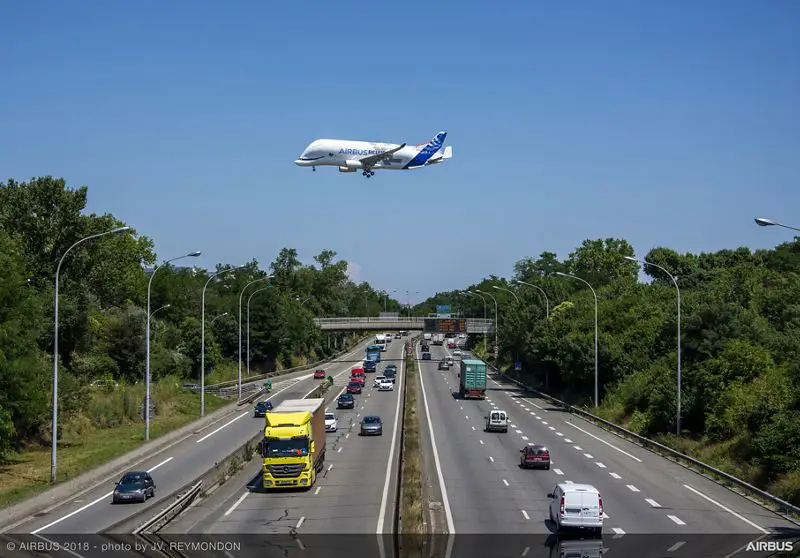
With an Airbus test crew aboard, the BelugaXL completes its maiden flight on 19 July 2018. The first of five BelugaXL aircraft to fly has landed at Toulouse-Blagnac, France at 14:41 hrs local time after successfully completing its first flight lasting four hours and 11 minutes.
The crew in the cockpit on board this flight comprised: Captain Christophe Cail, Co-Pilot Bernardo Saez-Benito Hernandez and Test-Flight Engineer Jean Michel Pin. Meanwhile, monitoring the aircraft systems and performance in real-time at the flight-test-engineer’s (FTE) station were Laurent Lapierre and Philippe Foucault.

Following the first flight, the BelugaXL will undergo some 600 hours of flight test over 10 months to achieve Type Certification and entry into service later in 2019. The BelugaXL programme was launched in November 2014 to address Airbus’ transport capacity requirements in view of the A350 XWB ramp-up and Single-Aisle production rate increases. Five aircraft will be built between 2019 and 2023 to gradually replace the five BelugaST. The aircraft will operate from 11 destinations as Airbus’ method of transporting large aircraft components.

Based on an A330-200 Freighter, the BelugaXL is powered by Rolls Royce Trent 700 engines. The lowered cockpit, the cargo bay structure and the rear-end and tail were newly developed jointly with suppliers, giving the aircraft its distinctive look. A fleet of BelugaXLs will replace the current BelugaST versions, which are used to transport completed aircraft sections among the company’s European production sites and to its final assembly lines in Europe.

With 30% more capacity than the existing Beluga, it will be able to carry two A350 XWB wings instead of one. Its new fuselage is 6.9 m longer and 1.7 metre wider than the Beluga, and it will be able to lift a payload 6 tons heavier. Its aft section is based on the A330-300 while its forward on the A330-200 for centre of gravity reasons, and the reinforced floor and structure comes from the -200F. The A330 wings, main landing-gear, central and aft fuselage form a semi-built platform with few systems, without the aft upper fuselage while the upper central fuselage is cut off, facilitated by the metal construction. The enlarged freight hold is mounted in three months with 8,000 new parts on the junction line.












